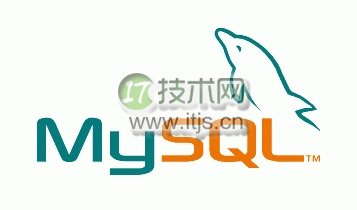PHP + MySQL 无限分类实现的2种方法
发布时间:2015-03-02 00:00 来源:codeceo
无限分类是个老话题了,PHP和MySQL中实现无限分类的思路也有许多种,本文主要介绍其中2种最巧妙的无限分类方法,一起来看看吧。

第一种方法
这种方法是很常见、很传统的一种,先看表结构
表:category
id int 主键,自增
name varchar 分类名称
pid int 父类id,默认0
顶级分类的 pid 默认就是0了。当我们想取出某个分类的子分类树的时候,基本思路就是递归,当然,出于效率问题不建议每次递归都查询数据库,通常的做法是先讲所有分类取出来,保存到PHP数组里,再进行处理,最后还可以将结果缓存起来以提高下次请求的效率。
先来构建一个原始数组,这个直接从数据库中拉出来就行:
$categories = array(
array('id'=>1,'name'=>'电脑','pid'=>0),
array('id'=>2,'name'=>'手机','pid'=>0),
array('id'=>3,'name'=>'笔记本','pid'=>1),
array('id'=>4,'name'=>'台式机','pid'=>1),
array('id'=>5,'name'=>'智能机','pid'=>2),
array('id'=>6,'name'=>'功能机','pid'=>2),
array('id'=>7,'name'=>'超级本','pid'=>3),
array('id'=>8,'name'=>'游戏本','pid'=>3),
);
目标是将它转化为下面这种结构
电脑
—笔记本
——-超级本
——-游戏本
—台式机
手机
—智能机
—功能机
用数组来表示的话,可以增加一个 children 键来存储它的子分类:
array(
//1对应id,方便直接读取
1 => array(
'id'=>1,
'name'=>'电脑',
'pid'=>0,
children=>array(
&array(
'id'=>3,
'name'=>'笔记本',
'pid'=>1,
'children'=>array(
//此处省略
)
),
&array(
'id'=>4,
'name'=>'台式机',
'pid'=>1,
'children'=>array(
//此处省略
)
),
)
),
//其他分类省略
)
处理过程:
$tree = array();
//第一步,将分类id作为数组key,并创建children单元
foreach($categories as $category){
$tree[$category['id']] = $category;
$tree[$category['id']]['children'] = array();
}
//第二部,利用引用,将每个分类添加到父类children数组中,这样一次遍历即可形成树形结构。
foreach ($tree as $k=>$item) {
if ($item['pid'] != 0) {
$tree[$item['pid']]['children'][] = &$tree[$k];
}
}
print_r($tree);
打印结果如下:
Array
(
[1] => Array
(
[id] => 1
[name] => 电脑
[pid] => 0
[children] => Array
(
[0] => Array
(
[id] => 3
[name] => 笔记本
[pid] => 1
[children] => Array
(
[0] => Array
(
[id] => 7
[name] => 超级本
[pid] => 3
[children] => Array
(
)
)
[1] => Array
(
[id] => 8
[name] => 游戏本
[pid] => 3
[children] => Array
(
)
)
)
)
[1] => Array
(
[id] => 4
[name] => 台式机
[pid] => 1
[children] => Array
(
)
)
)
)
[2] => Array
(
[id] => 2
[name] => 手机
[pid] => 0
[children] => Array
(
[0] => Array
(
[id] => 5
[name] => 智能机
[pid] => 2
[children] => Array
(
)
)
[1] => Array
(
[id] => 6
[name] => 功能机
[pid] => 2
[children] => Array
(
)
)
)
)
[3] => Array
(
[id] => 3
[name] => 笔记本
[pid] => 1
[children] => Array
(
[0] => Array
(
[id] => 7
[name] => 超级本
[pid] => 3
[children] => Array
(
)
)
[1] => Array
(
[id] => 8
[name] => 游戏本
[pid] => 3
[children] => Array
(
)
)
)
)
[4] => Array
(
[id] => 4
[name] => 台式机
[pid] => 1
[children] => Array
(
)
)
[5] => Array
(
[id] => 5
[name] => 智能机
[pid] => 2
[children] => Array
(
)
)
[6] => Array
(
[id] => 6
[name] => 功能机
[pid] => 2
[children] => Array
(
)
)
[7] => Array
(
[id] => 7
[name] => 超级本
[pid] => 3
[children] => Array
(
)
)
[8] => Array
(
[id] => 8
[name] => 游戏本
[pid] => 3
[children] => Array
(
)
)
)
优点:关系清楚,修改上下级关系简单。
缺点:使用PHP处理,假如分类数量庞大,效率也会降低。
第二种方法
这种方法是在表字段中增加一个path字段:
表:category
id int 主键,自增
name varchar 分类名称
pid int 父类id,默认0
path varchar 路径
示例数据:
id name pid path
1 电脑 0 0
2 手机 0 0
3 笔记本 1 0-1
4 超级本 3 0-1-3
5 游戏本 3 0-1-3
path字段记录了从根分类到上一级父类的路径,用id+’-'表示。
这种方式,假设大家要查询电脑下的所有后代分类,只需要一条sql语句:
select id,name,path from category where path like (select concat(path,’-',id,’%') as path from category where id=1);
结果:
+—-+———–+——-+
| id | name | path |
+—-+———–+——-+
| 3 | 笔记本 | 0-1 |
| 4 | 超级本 | 0-1-3 |
| 5 | 游戏本 | 0-1-3 |
+—-+———–+——-+
这种方式也被很多人所采纳,我总结了下:
优点:查询容易,效率高,path字段可以加索引。
缺点:更新节点关系麻烦,需要更新所有后辈的path字段。




